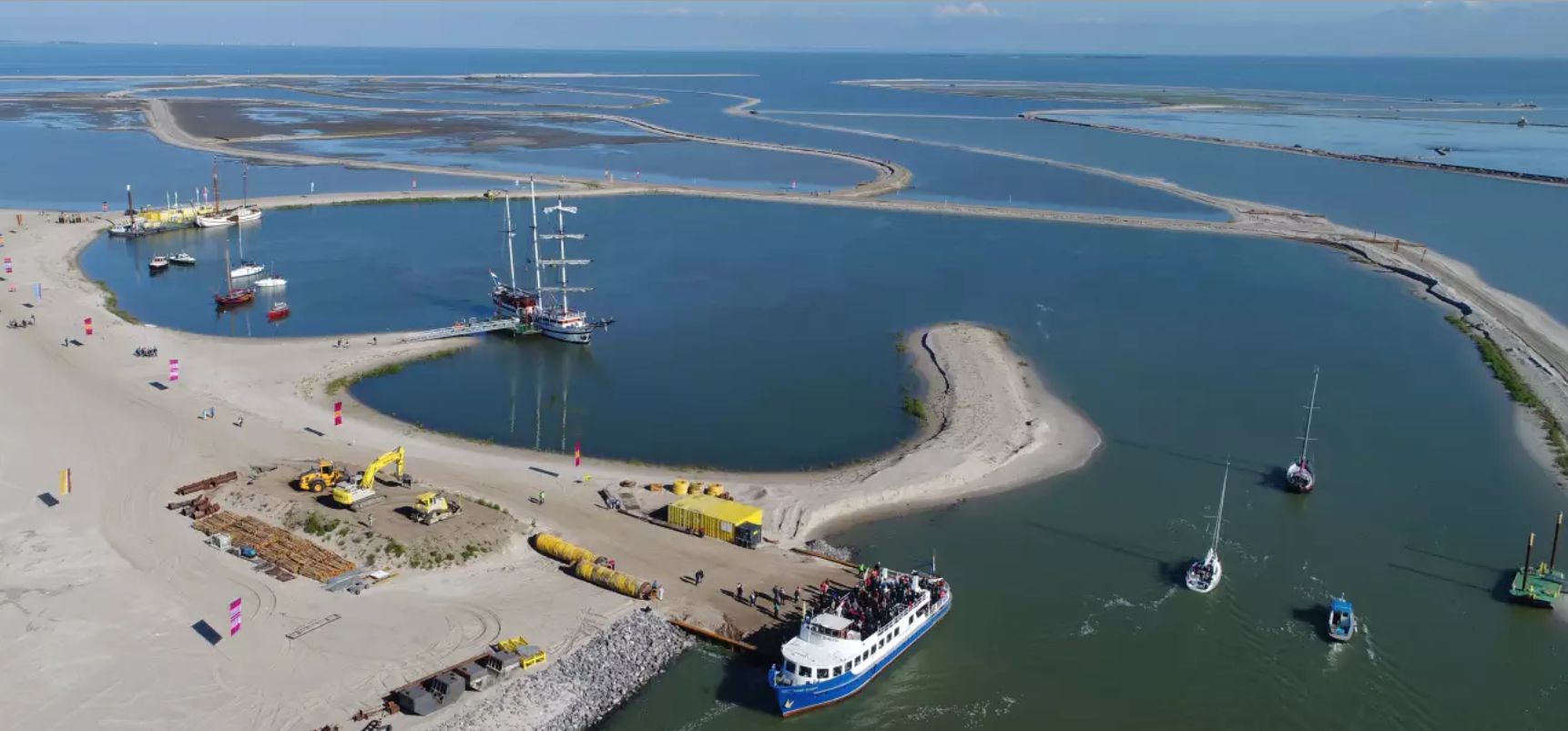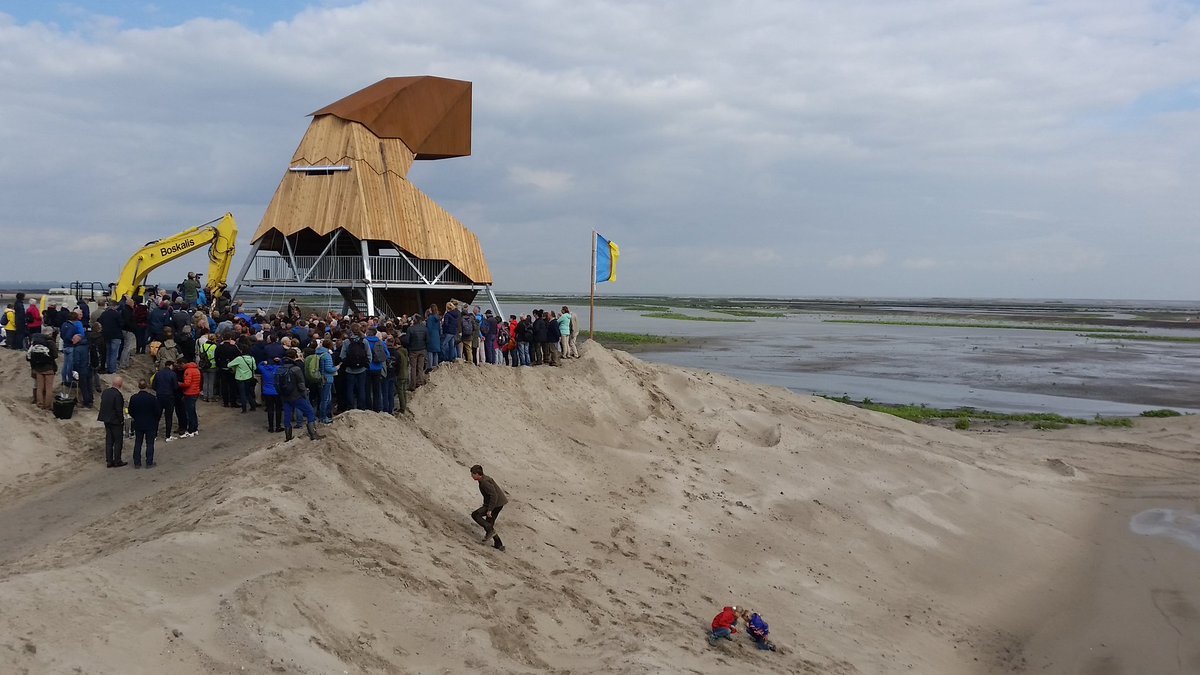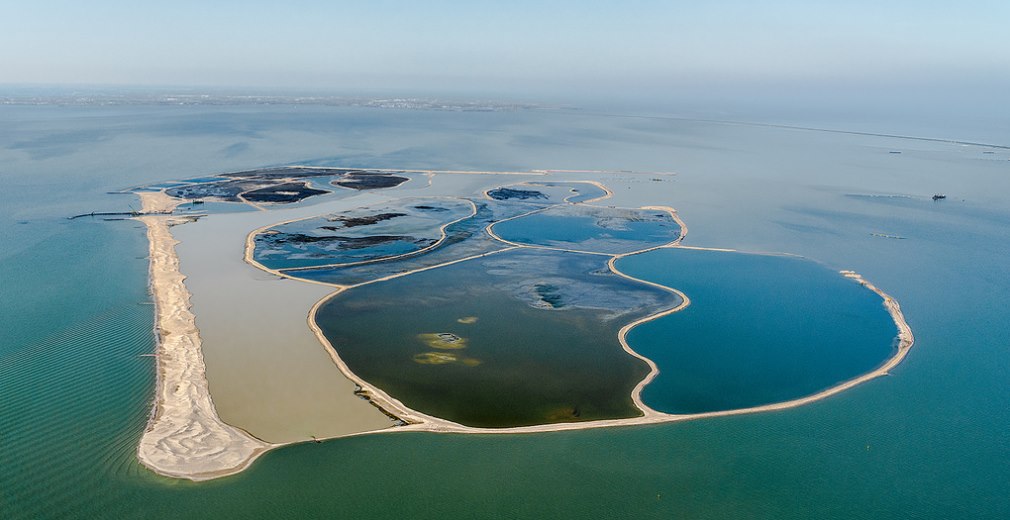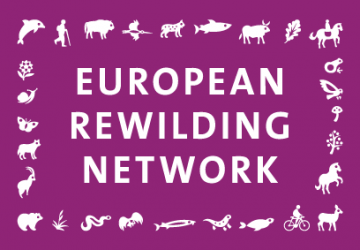The newly opened island, one of five created in the Markermeer as part of the Netherlands-based Marker Wadden rewilding project, attracted crowds of nature lovers. By creating new habitat and improving water quality, the project is reconnecting people with wild nature and boosting biodiversity.

The weekend of September 8 and 9 saw nearly 3000 people witness spectacular birdlife on a newly opened island in the centre of the Markermeer (Lake Marken) in the Netherlands. The island has been created as part of the ongoing Marker Wadden project, one of Europe’s largest, most ambitious and most innovative nature restoration initiatives. Overseen by Dutch non-profit organisation Natuurmonumenten (the Dutch Society for Nature Conservation), the project has been a member of the European Rewilding Network (ERN) since 2017.
“The opening of the island is a real milestone in our project,” says Natuurmonumenten project director Roel Posthoorn. “One of our project objectives is to reconnect people with wild nature, and it was fantastic to see so many people – both Dutch and international – make the voyage.”

Those who took the 10 kilometre boat trip were certainly given a treat after they arrived, with an abundance of birdlife on display. This included around 1200 avocets, as well as other waders, terns and spoonbills. Access to a range of strategically located hides, including one that allows users to see underwater, has been enabled through a 12-kilometre long footpath.
One of the largest freshwater lakes in western Europe, the 700 square-kilometre Markermeer is a shallow lake with a depth of between 3 and 5 metres. It used to be part of the Zuiderzee, a saltwater inlet of the North Sea, which was dammed off in 1932.

Following the abandonment of a land reclamation project in the 1980s, the Markermeer became a valuable ecological and recreational asset. The lake is a Natura 2000 site, and an important breeding, resting and wintering habitat for numerous bird species. It is also home to wide range of fish species, on which many bird species depend.

Unfortunately the biodiversity of Markermeer has declined drastically over the last few decades. Due to the separation of the lake by dykes, sediment which was once carried away on currents now falls to the bottom of the lake, making the water turbid and negatively impacting fish and bird populations, as well as plants and molluscs.
The Marker Wadden project, which began in 2014, has seen the creation of five islands in the lake, using fine sediment from the lake bottom. This is not only providing a wide range of valuable new habitats, but is also solving the problem of siltation by changing water dynamics and creating deeper gullies where suspended silt can settle out. Improved water quality is benefitting many species of birds, fish and macrofauna by boosting ecological productivity, as well as those involved in recreational activities on the Markermeer.
“We are delighted to report that so far our island creation is working as intended,” says Natuurmonumenten’s Posthoorn. “We have seen a marked increase in the amount of zooplankton in shallow waters, which means that turbidity has decreased. This, in turn, supporting greater fish and bird numbers.”
The recently opened island is the only one accessible to the public – the other four, which are now undergoing a process of vegetation, are solely for the benefit of wildlife.
While charter ferries currently make the journey out to the island a few times a week, the service should become more regular by 2020. A beach has also been created next to the marina, so visitors are expected to include a mix of nature lovers, beach lovers and exercise enthusiasts.
“We will continue our monitoring, of course, but I’m optimistic about the outcome of this massive restoration,” says Natuurmonumenten’s Posthoorn. “Benefitting wild nature, local residents and visitors, this pioneering rewilding project can hopefully serve as a role model for other large-scale initiatives across Europe and farther afield.”
Scaling up rewilding
Rewilding Europe is part of a burgeoning pan-European rewilding movement which has seen many impressive and inspiring initiatives develop over recent years. With rewilding-related projects continuing to multiply and flourish across the continent, the objective of the ERN is to connect, support and strengthen them.
 The ERN has displayed impressive growth since its launch at the WILD10, the World Wilderness Congress in Salamanca in October 2013. It operates on a stronger together philosophy, promoting rewilding as a conservation approach. Members meet regularly – usually via webinar – to share knowledge, insight and examples of best practice.
The ERN has displayed impressive growth since its launch at the WILD10, the World Wilderness Congress in Salamanca in October 2013. It operates on a stronger together philosophy, promoting rewilding as a conservation approach. Members meet regularly – usually via webinar – to share knowledge, insight and examples of best practice.
Rewilding Europe extends a warm welcome to all rewilding initiatives and encourages them to apply for membership of the ERN. Please view this page for more information on application.
